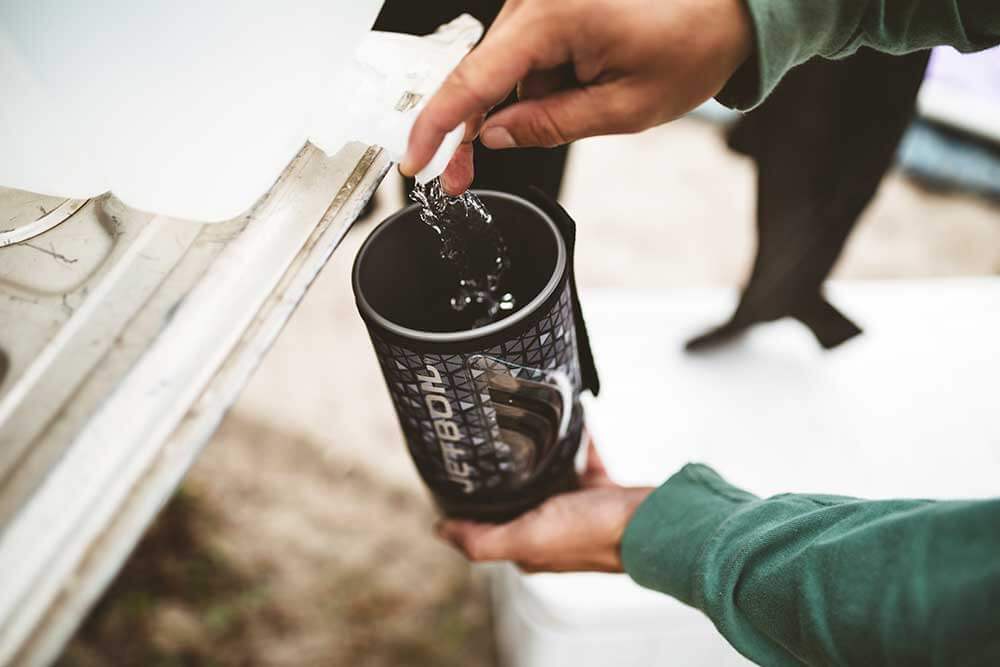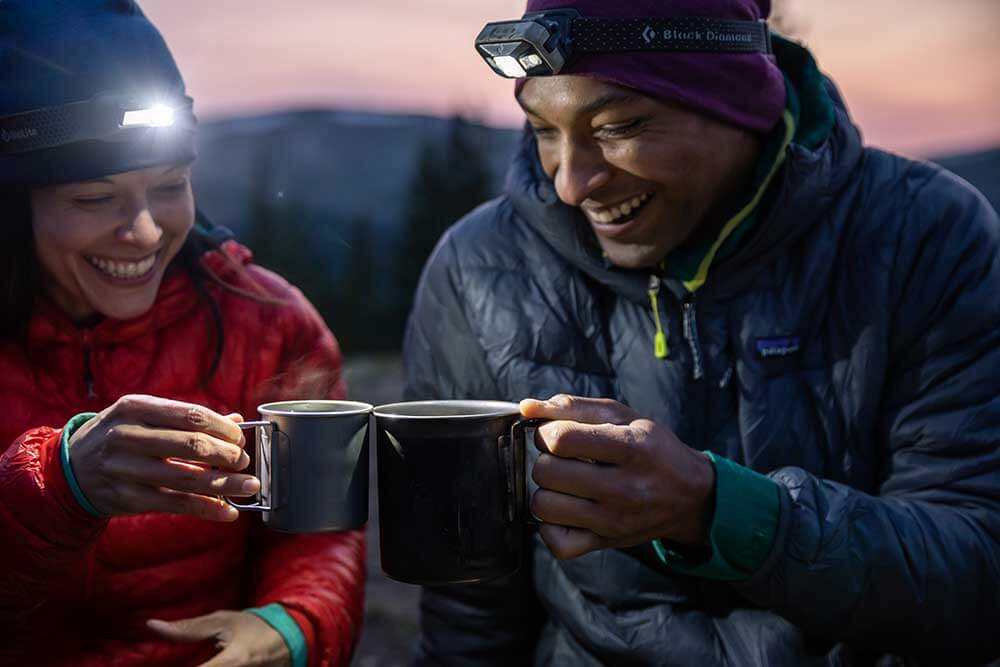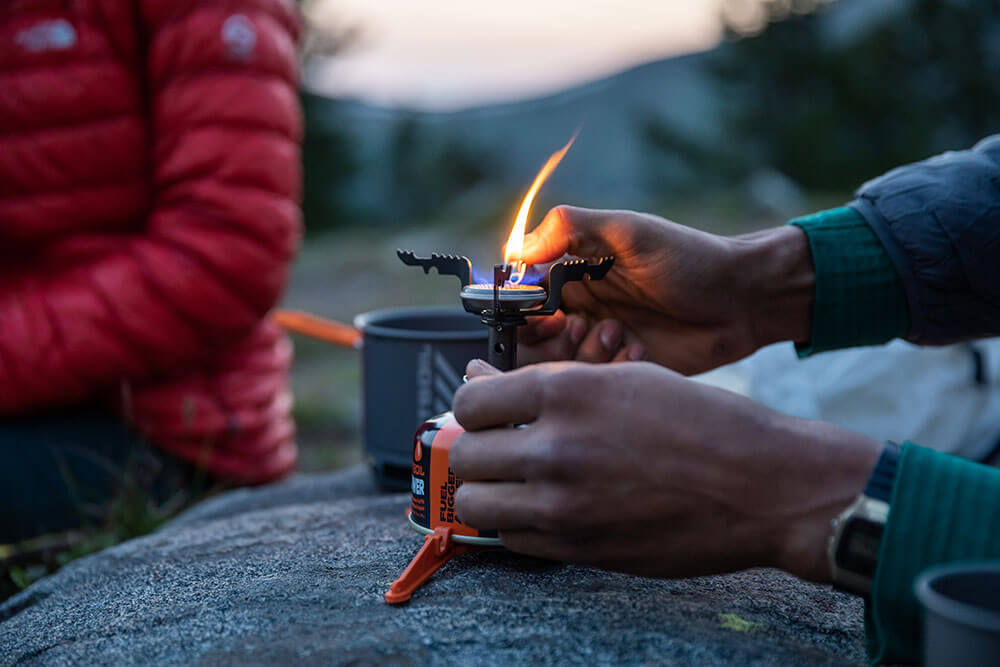Essential Hiking Gear List

Hiking is a great way to get outside, get your heart going, and get back in touch with the natural world. Depending on where you hike, your trip may look vastly different than someone else's. Trekking or winter backpacking may both technically be types of hiking, but the gear you'll take with you is going to be vastly different than what you'll bring along for a day hike.
This list is a general introduction to the kinds of hiking gear you should bring on a day hike. While a day hike may not be as lengthy or strenuous as a backcountry camping trip, it's still important to have appropriate gear and safety essentials on hand.
Hiking Boots and Footwear
Appropriate hiking footwear is one of the most important things you can bring with you. You may not need boots specifically, but you definitely need shoes that will protect you on the trail. You'll want footwear that fits properly, since you're going to put it through its paces. Consider getting measured in person to ensure proper fit.
- Hiking boots offer heavy-duty protection. A solid pair will provide good traction and waterproof protection. But most importantly, supportive boots can help keep your ankles from rolling. Some people may be more at risk of rolling an ankle than others, but for many folks, the added stability makes a difference.
- Trail runners or hiking shoes are lighter than boots, offering a little more maneuverability. And since they're lighter, each step takes a little less energy. A solid pair will still offer traction and waterproofing, but in a much more lightweight package. Some people find that the maneuverability is worth trading off the ankle protection.
- Heel-backed sandals can come in handy if you need to cross a river or want to go swimming. Nobody wants to fill their boots with water and then tromp down a trail in soaked socks. Come prepared for the trail you're walking.
- Socks are important, as well. Look for socks that are as tall as the shoes or boots you're wearing. You want enough cushioning to keep you comfortable and warm, and you want a fabric that will wick away moisture and keep you as cool or cozy as the weather demands.
If you have both trail shoes and boots, consider saving the boots for tougher trails. Muddy, slippery trails or rocky paths are where you'll see the most benefit from boots. Whatever shoe you choose, it's important to have footwear meant specifically for hiking. You don't want to bring cross-trainers or sandals on a hiking trail.
Backpack
Just because you aren't exactly backpacking doesn't mean you shouldn't bring a backpack. You just don't need a monster of a pack. Here are some options.
- Day packs are small, light backpacks meant for day hikes. They may have anywhere from 20 to 30 liters carrying capacity. Think of a backpack you might have used for school. Just a little more rugged and purpose-built for hitting the trails.
- Waist packs used to be called fanny packs. Sitting around your waist, they take up a lot less space than a backpack, and they're easier to carry. At the same time, you lose a lot of space. Depending on how much you bring with you, though, you may not need that much room.
Water and Hydration

Drinking water is one of the most important aspects of doing any physical activity. Your body needs to stay hydrated to stay active.
- Hydration packs bridge the gap between a backpack and a hydration system. They may have room for toting other hiking gear, but their main purpose is to carry water so that it's out of the way and easily accessible. They hold a water bladder, connected to a tube that sits in easy reach of your face. This lets you drink without slowing down. You may see specialized hydration packs made for hiking, cycling, or running. They can come as backpacks, vests, or waist packs.
- Water purification can come in many varieties, including tablets, filters, and camp stoves for boiling water. It can help you turn the water you find into drinkable water. Just be mindful that you some purification removes dirt without killing germs, which is not the safest option to take.
- Water bottles are maybe the most popular option. They're affordable, and you have all kinds of options now, including collapsible bottles, filtered bottles, and insulated bottles that can keep water hot or cold. The downside is that you may need to stop and get them out of your bag to take a drink. Just be sure that any water bottles you take with you come back with you, too.
There are plenty of ways to bring or make drinkable water, and there's no reason not to have more than one on hand. Even if you bring a water bottle along, having a lightweight gravity water filter for safety is a smart call.
Food and Snacks
Keeping your energy up is important. You need protein and complex carbohydrates to keep your body moving, especially if you're planning to hike most of the day. Food doesn't have to be complicated. You can bring easy-to-carry foods like sandwiches, fruit, energy bars, or trail mix.
Of course, if you want to treat yourself, taking time to cook never hurts. The MiniMo Cooking System is small and lightweight enough to bring for a short hike. You can use it to boil water for coffee or tea, or even cook yourself a hot meal.
Clothing, Layers, and Rain Gear
Choose your outfit carefully when hiking. You want protection from the elements, as well as breathability and range of motion. Depending on where you are, the season, and the time of day, your needs may vary. You may want to bring several layers to add or remove as the sun rises and your body heats up. You may want a windbreaker or a rain jacket. You'll almost certainly want a hat to help reduce sunglare and sunburn. Do your research and make sure that you're prepared in case the weather turns surprising.
Headlamp

A headlamp (or flashlight, or lantern) won't take up much space. But it's an important safety tool that belongs in any set of essential hiking gear. If you get off the trail late, or encounter low-light conditions, you'll want some illumination on hand. And if you need to signal your location to emergency responders, a good light source helps there, too.
Flashlights and lanterns tend to be more powerful, but a headlamp is hands-free, and usually has a long battery life.
Pocket Knife or Multi-tool
A good pocket knife is handy in all sorts of situations. A knife can come in handy when cutting cords, prepping food, or any number of other situations. A multi-tool is even handier. It can help with everything from opening cans to screwing eyeglasses back together. The better you know your multi-tool, the more situations you can find to use it. (Just remember to take it out of your pack if you use the same bag as your airplane carry-on!)
Small First Aid Kit
A little first aid prep goes a long way. A lightweight kit with bandages, gauze, tape, and other essentials is important to have on hand. You won't need it often, but if you ever do, you'll be grateful to have it. Consider extras like sunscreen and bug repellent that may not be part of a typical first aid kit, but are still important for staying healthy on the trail depending on where you hike.
Cordage
A decent length of cord has endless uses. When you're camping, you can use cord to hang food from trees, substitute tarp lines, and make a clothesline for wet gear.
But even if you aren't staying on the trail overnight, you can get a lot of use out of a bit of rope. You can use your cordage to lash items to your pack, and even to replace a broken strap on your pack in a pinch. You can replace broken shoelaces with it, if you need to. Cordage is so versatile and so essential that bringing it along just makes sense.
Fire Starting

Even if you're not planning on staying the night, being able to start a fire could be important. And a basic fire starter-like a lighter, or waterproof matches, or a ferro rod-isn't going to take up much pack space. It's best to have two methods on hand, in case one fails. If you get lost, a fire can help you keep warm, and might even increase your visibility. You can also make a little kindling helper with an egg carton, some wax, and dryer lint.
Navigation: Maps, Compass, and Apps
Your phone's GPS is great, and you can use it to plan your trip. But it's not the most reliable pathfinder when you're actually hiking. You may find yourself without a cell signal, or low on battery. It might rain, making your touchscreen hard to handle. Having another navigation method can make a big difference when you least expect it.
It's a good thing that there are plenty of other options! A paper map and a compass take up next to no space. But having them and knowing how to use them together can help you navigate any trail with confidence. If you want something a little more modern, a standalone GPS unit is a great backup to have. It's likely to have better battery life than your phone, and GPS units often have a signal in places phones don't.
Remember, it's always important to let people know when and where you're hiking and when you plan to be back.
Emergency Signaling
Having a way to signal for help is a good precaution to take. Like a fire starter, it won't take up much space, and you can leave it in your pack between trips. We already talked about a having a headlamp. Among its many uses, emergency signaling is one of them. But you can also use a small mirror to reflect light, or a glow stick. A whistle is a smart choice, too. Being able to attract attention with light or with sound means people might find you through one, even if they're out of range of the other.
Bringing it all Together
This may seem like a lot to bring on a day trip. But all of the items here are small and lightweight. They won't take up much space in a pack, and you won't need a huge pack to carry them with you. Most importantly, they'll help keep you comfortable and safe. It's easy to enjoy the trail when you've got peace of mind.